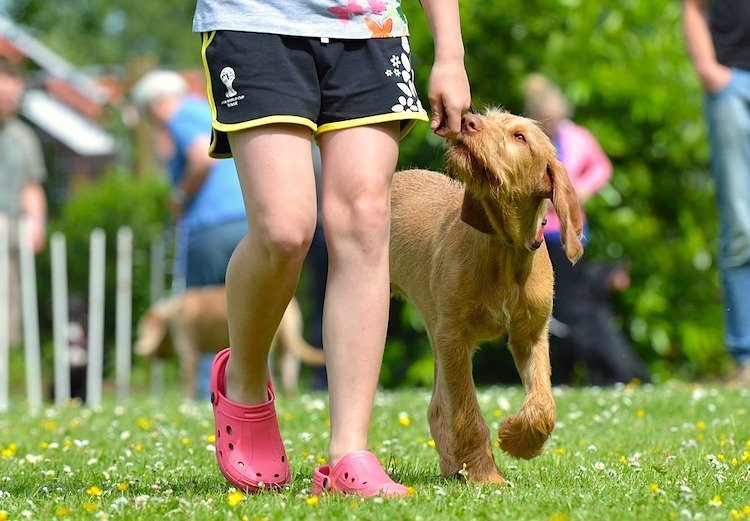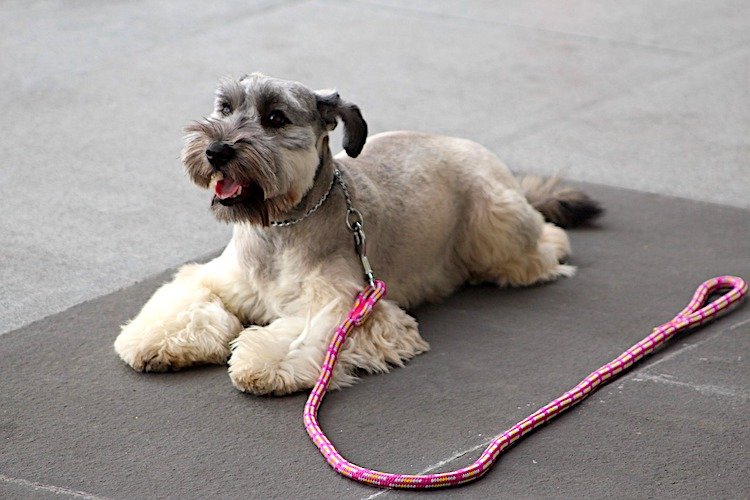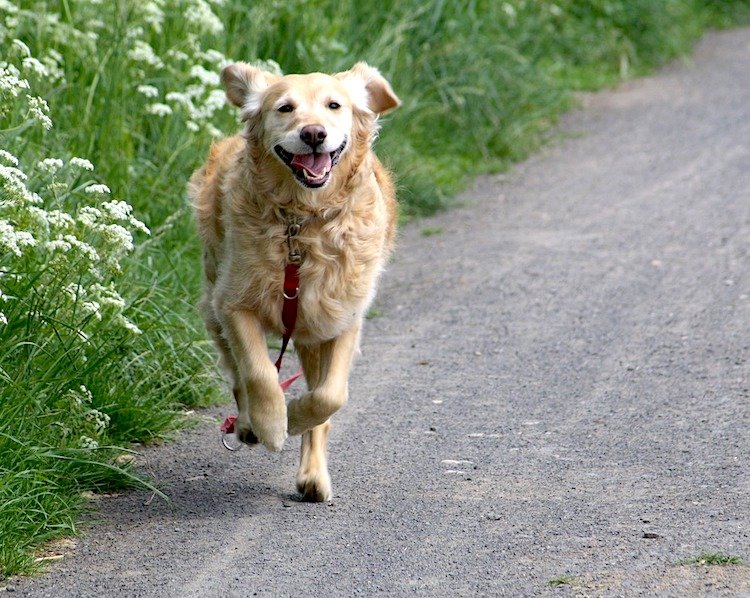
- The Importance of Training Your Dog with Basic Dog Commands
- Introducing Your Puppy to Basic Dog Commands
- 5 Basic Dog Commands Your Dog Should Know
- Common Challenges and Solutions in Teaching Basic Dog Commands
- Transitioning from Treats to Verbal Praise in Basic Dog Commands
- Final Thoughts
- Frequently Asked Questions (FAQ)
- References
The Importance of Training Your Dog with Basic Dog Commands
Have you ever been around a rambunctious, untrained dog?
- The dog is barking, ignoring directions, pulling on the leash, jumping on guests, nipping at hands, and generally causing chaos.
- Everyone in the home seems frustrated and on edge around the dog.
- Guests uneasily move away — or maybe they don’t come to visit at all anymore when the dog is out.
Now, have you ever been around a well-behaved dog?
- The dog is friendly, responsive to calm commands, able to settle quietly when it’s not time for play, and generally adored by everyone around.
The two dogs described above could be the same dog. What’s the difference? One is trained and well-socialized, and the other is not.
Training with basic dog commands makes life with a dog enjoyable and peaceful. It allows them to join in on activities like guests’ visits, vacations, and trips to the park.
A well-trained dog is often happier too. Dogs tend to thrive with boundaries, a calm and confident leader, more involvement with the family, less fear of new things, and the mental and physical exercise involved in training. And, well, less yelling. (Sadly, yelling is more likely to occur when humans are stressed and uneducated about their pet’s behavior.)
Introducing Your Puppy to Basic Dog Commands
Starting training at a young age is crucial for your puppy’s development. Early obedience training sets the foundation for a well-behaved and happy dog. Here are some tips to keep training sessions short, fun, and effective:
- Start Early: Begin training as soon as you bring your puppy home. Puppies are highly receptive and eager to learn.
- Short Sessions: Keep training sessions between 5-10 minutes to maintain your puppy’s interest and avoid overwhelming them.
- Positive Environment: Ensure the training area is calm and free from distractions.
- Consistency: Use the same commands and rewards every time to help your puppy understand and remember them.
- Patience and Fun: Be patient and make training enjoyable with lots of praise and play.
Introducing basic dog commands early on helps build a strong bond and sets the stage for more advanced training.
5 Basic Dog Commands Your Dog Should Know
There’s an almost infinite number of things you can teach your pup if you are ambitious and have enough time on your hands. However, just a few simple commands can make life much easier and more enjoyable.
Most of the basic dog commands taught in this article can also be built on later to help your pup really impress. For example:
- A dog who is reliable off-leash starts with a basic “come.”
- A master hunter must learn “sit” before they can be brought into the field.
- A service dog must learn “leave it” and a host of other obedience commands to prepare them for public access.
Maybe you just want a sweet couch potato to pass your time with. Whatever you plan to do with your dog, teaching a few simple basic dog commands is a great way to begin.

Teaching Your Dog to Sit
“Sit” is probably the most frequently used of the basic dog commands for dogs. A sitting dog cannot:
- Jump
- Bolt out of doors
- Bother something they should leave alone
- Pull on the leash
- Say hi to your guest who is afraid of dogs
- Chase the neighborhood cat
A sitting dog is more likely to:
- Pay attention to you
- Wait politely for something
- Greet people calmly
- Appear friendly
- Be less pushy
“Sit” is an important prerequisite for many tricks and basic commands. A dog who knows “sit” can more easily learn “down,” leash manners, and tricks like shaking paws. “Sit” is vital for hunting training and other canine sports. In other words, “Sit” is an extremely useful basic dog command
How to Teach Your Dog to Sit
- Grab your pup’s favorite treats, dog food, or a toy.
- In a calm location, get the dog’s attention with the treat to practice basic dog commands
- Hold the treat over their head and move it from above their nose to behind their head. Say, “Sit.”
- As soon as your dog’s bottom touches the floor, praise them and give the treat.
- If your pup backs up, practice in a corner with their back to the wall.
- Repeat until they sit as soon as you say “Sit” or see the treat move.
- Practice without the treat in hand, using an empty hand gesture.
- Gradually phase out the hand gesture, delaying it by 7 seconds after the command.
- Incorporate “sit” into daily routines like before walks, meals, or playtime.
For more tricks to teach your dog, check out this tricks guide.

Teaching Your Dog to Lie Down
“Down” is another super-useful command.
- Helps an overly excited dog be polite around guests with basic dog commands.
- Keeps a car-sick dog relaxed in the car.
- Provides an activity when you want to relax.
- Useful in public, allowing visits to parks, pet stores, and restaurants.
“Down” builds respect and self-control, helping your dog feel calmer and more compliant. It is also vital for many tricks and advanced obedience skills.
How to Teach “Down”
- Use treats or a toy your dog loves.
- Hide the treats in your pocket or treat pouch. Go to a calm location and have your dog sit.
- Touch a treat to their nose, then move it to the floor and away from them. Say, “Down.”
- If they stand up, lure them back into a sit and try again, moving the treat slower.
- As soon as their chest touches the floor, praise and reward them.
- If struggling, move the treat between their front paws underneath them.
- Place a hand above their lower back if they keep standing up.
- Practice until they lie down when seeing the treat or hearing “Down.”
- Remove the treat from your hand, pretend you’re still holding it, and use the empty hand gesture.
- Gradually phase out the hand gesture by delaying it after the command.
- Reward only when their response improves or every 3-5 repetitions.
- Use life rewards to maintain the behavior. Practice in various locations and with distractions.
For more on this command, see How to Teach a Puppy to Lie Down on Command.

Teaching Your Dog to Stay
“Stay” is often taught along with “sit,” “down,” and “stand.” Some people teach it as an automatic part of those commands, without having to say, “Stay” after giving the initial command. However, many prefer to teach “stay” as a separate command to ensure clarity.
How to Teach Stay
Was YOUR Pet Food Recalled?
Check Now: Blue Buffalo • Science Diet • Purina • Wellness • 4health • Canine Carry Outs • Friskies • Taste of the Wild • See 200+ more brands…

- Tell your dog “Down” or “Sit” and put your hand toward them with your palm facing out, like a stop sign. Say, “Stay.”
- Slowly back away from your dog. If they try to get up, return to them, say “Uh-uh,” and have them return to the sit or down position without rewarding them.
- Repeat backing away once they are in the correct position to reinforce basic dog commands. If they stay put, calmly praise them, return to them, and hold a treat under their chin to reward them. Do not release them from the position every time you reward.
- Practice backing up and returning until you can walk farther away and have them hold the command for longer, gradually increasing the length of the stay as they improve.
- When you are ready for them to get up, tell them “OK!” or “Free!” in an excited tone of voice.
- Incorporate “stay” into your dog’s daily life. For example:
- Tell your dog “Down” while you are reading, watching TV, or working on a computer. Slip their leash under your foot to keep them in place. Say, “Stay,” and periodically reward them for staying down.
- On walks, periodically stop in calm locations away from traffic. Tell them to sit and uncoil some of the leash so that you can walk a few feet away. Gradually increase the length of the stay before releasing them.
By practicing “stay” in various situations and with different distractions, your dog will become more reliable with this command.

Teaching Your Dog to Come
“Come” might be the most critical command you ever teach your dog. It can save your dog’s life and opens up a world of off-leash adventures.
How to Teach “Come”
- Recruit a friend or family member. Give each person some treats or a favorite toy.
- Have one person call your dog’s name and say, “Come!” while running away excitedly.
- When your dog chases them, they should praise the dog and give treats or play a short game of tug when the dog catches up.
- After rewarding, have the person release the dog by saying, “OK!”
- Repeat with the next person calling the dog and running away.
Practice until your dog comes reliably, even with the reward hidden.
Adding Distractions
- Use a harness and attach a 20-30 foot leash. Let your dog wander about 10 feet away.
- Call your dog’s name and say, “Come!” in an excited tone.
- If they come, praise and reward them with treats while holding their collar. Then release them with “OK!”
- If they don’t come, reel them in with the leash, praise them, have them sit, and then release them. Don’t reward with treats if they had to be reeled in.
- Repeat around the same distraction until they come willingly 5 times in a row.
Gradually practice in new locations with increasing distractions until your dog reliably comes when called in all situations.
For more on this critical command, see How to Train a Dog to Come When Called.

Teaching Your Dog to Leave It
“Leave it” is an essential command that can prevent your dog from picking up something gross or dangerous, prevent destructive chewing, deal with food theft, and even help with puppy mouthing. It’s crucial for addressing behavior issues effectively.
How to Teach “Leave It”
- Place a treat inside your hand and close your hand around it to teach basic dog commands. Show your closed hand to your dog and say, “Leave it.”
- When your dog stops trying to get the treat, praise them and give a different treat from your other hand.
- Repeat until your dog immediately leaves the treat-filled hand alone when you say, “Leave it.”
- Make the command harder by opening your hand part of the way, saying “Leave it,” and showing the dog the treat. Be ready to close your hand if they move toward the treat.
- Reward with a separate treat when the dog leaves the one in your hand alone.
- Place the treat on the floor next to your foot. Say, “Leave it,” and be ready to cover the treat with your foot if they try to get it.
- Gradually add distance by backing away from the treat while practicing basic dog commands. Be ready to cover the treat if your dog decides to disobey.
- Add movement by dropping the treat by your foot while saying, “Leave it” as it falls.
- Practice with household objects like socks, shoes, and kids’ toys. If your pup tends to steal food, practice with plates of real food — be ready to block access if they go for it.
For more on preventing destructive chewing, check out this guide on training your dog not to chew.
8 More Commands to Teach Your Dog
Our dogs can be such an enjoyable part of our lives. Having a well-trained dog with basic dog commands makes life more peaceful, fun, and stress-free for both of you.
The 5 basic commands covered above are fantastic to start with, but don’t be afraid to continue on to some other commands. Training with basic dog commands is great for your relationship with your dog, basic dog commands provide them with an outlet for their energy, make it easier to take them places and have adventures together, and can help with a host of behavior issues.
Additional commands include:
Training your dog with these additional commands will enhance your bond and make your life together more enjoyable.
Here are a few more tips from a dog trainer (SKIP to the 1:06 mark) — but try not to get distracted by the ridiculous cuteness of this puppy:
Common Challenges and Solutions in Teaching Basic Dog Commands
Training can come with challenges, but with the right strategies, you can overcome them:
- Distractions: If your dog gets easily distracted, train in a quiet area and gradually introduce distractions as they become more proficient.
- Lack of Response: If your dog doesn’t respond to commands, ensure you’re using a clear, consistent tone and try using higher-value treats.
- Stubbornness: For stubborn dogs, keep training sessions positive and engaging. Break commands into smaller steps and reward each success.
- Overexcitement: Calm an overly excited dog before training by giving them some exercise or practicing calm behaviors.
- Fear or Anxiety: Use gentle encouragement and avoid punishment. Create a positive association with training through treats and praise.
By addressing these common challenges, you can make the training process smoother and more enjoyable for both you and your dog.
Transitioning from Treats to Verbal Praise in Basic Dog Commands
Initially, treats are a powerful motivator for teaching basic dog commands, but over time, transitioning to verbal praise and affection is beneficial:
- Gradual Reduction: Slowly reduce the frequency of treats while increasing verbal praise. For example, reward with a treat every other time, then every third time, and so on.
- Pairing Rewards: Pair verbal praise with treats initially. Say “Good dog!” while giving a treat, then gradually omit the treat.
- Increase Praise: Use enthusiastic verbal praise and petting to show your dog they’ve done well. Dogs respond well to positive emotions from their owners.
- Use Life Rewards: Incorporate everyday rewards, like playtime or walks, as part of the training. For instance, ask your dog to sit before going for a walk and reward them with the walk itself.
Transitioning from treats to verbal praise helps in maintaining your dog’s behavior in various situations without always relying on treats.
Final Thoughts
Each dog is different, just as each pet parent is different. Your dog might learn basic dog commands at the pace of light or go a bit slower. Remember the story of the Tortoise and the Hare — both are OK!
Enjoy the process of teaching basic dog commands and enjoy who your dog is. Try not to compare your dog or your experience with others, but learn what works for you and your particular dog. Some dogs are motivated best by food when learning basic dog commands, others by praise, and others by toys. Training is very relational and is a lot more fun when you and your dog find what works for you.
If your pup is struggling to learn a command, try:
- Slowing things down
- Rewarding smaller movements in the right direction
- Trying a different approach
- Noticing what your enthusiasm level and timing are like
Your Border Collie might pick up “sit” in 5 tries, but the average dog takes 40–50 repetitions of something before they really start to understand it. Stay consistent and enjoy the process. Most dogs actually get better at learning basic dog commands the more you train with them!
Frequently Asked Questions (FAQ)
How to train an older dog basic commands?
Training an older dog basic commands involves patience and consistency, using positive reinforcement techniques such as treats and praise.
What are the 10 basic dog commands?
The 10 basic dog commands are Sit, Stay, Come, Down, Heel, Off, No, Drop It, Leave It, and Watch Me.
How long does it take to train a dog basic commands?
It typically takes several weeks to a few months to train a dog basic commands, depending on the dog’s age, temperament, and consistency of training.
What are the 7 basic dog commands?
The 7 basic dog commands are Sit, Down, Stay, Come, Heel, Leave It, and Off.
References
- “Teach Your Puppy These 5 Basic Commands.” AKC. https://www.akc.org/expert-advice/training/teach-your-puppy-these-5-basic-commands/
- “When to Start Teaching Puppy Commands (and the First 5 to Teach!).” PupBox. https://www.pupbox.com/training/when-to-start-teaching-puppy-commands/
- “Basic Dog Training: Good Manners and Dog Training 101.” AKC. https://www.akc.org/expert-advice/training/basic-dog-training-good-manners-and-dog-training-101/



